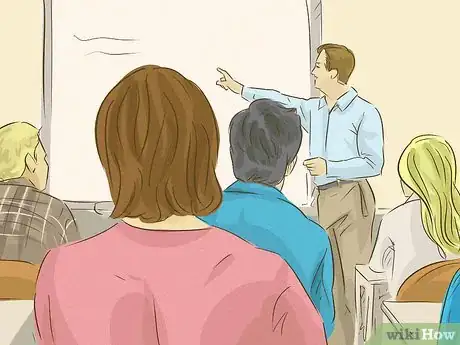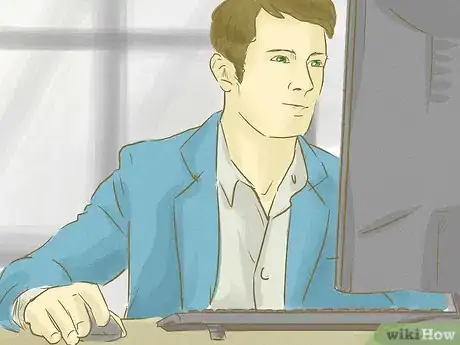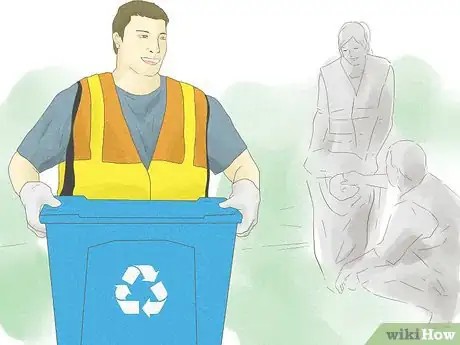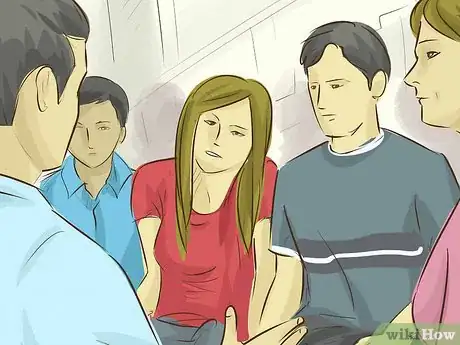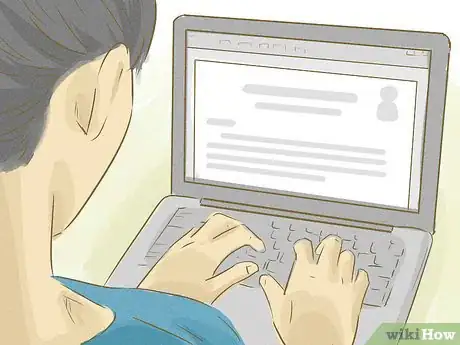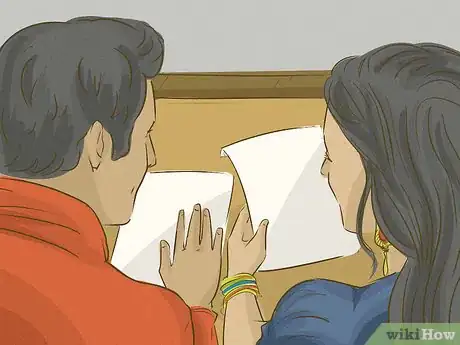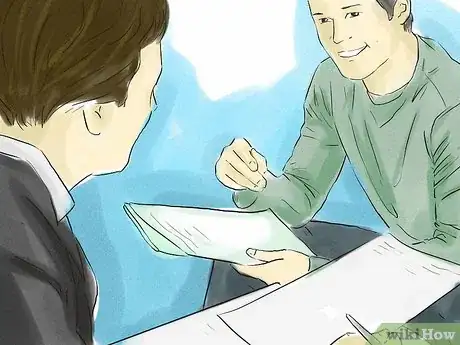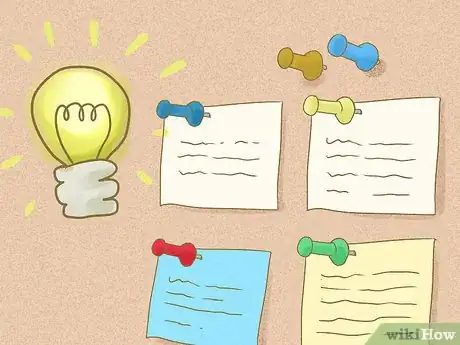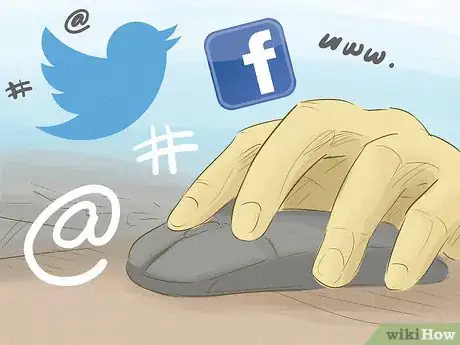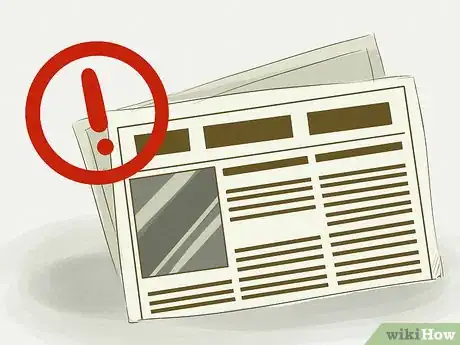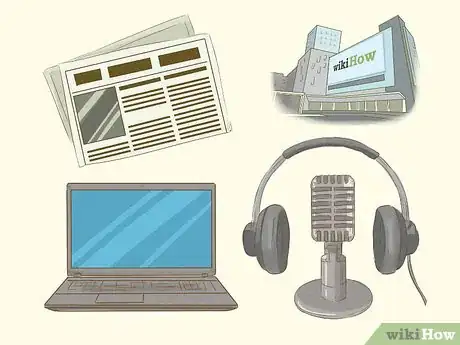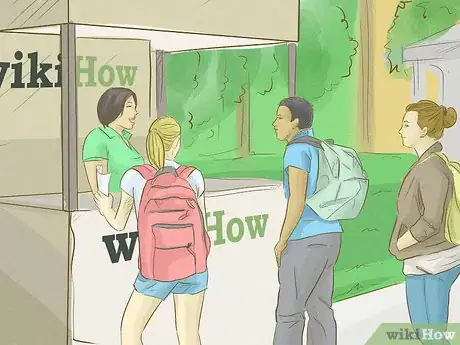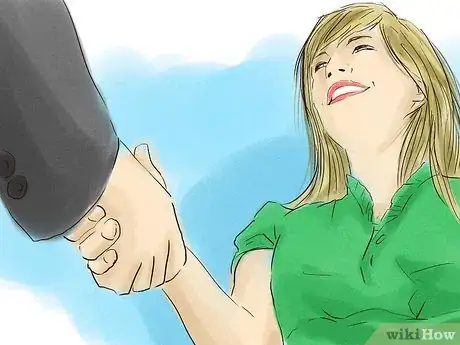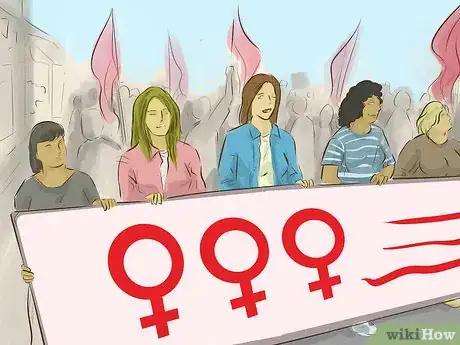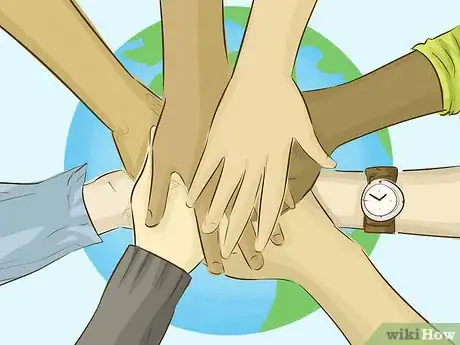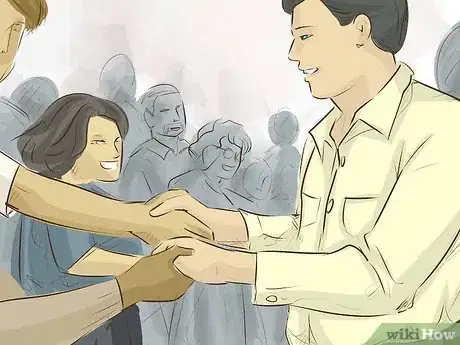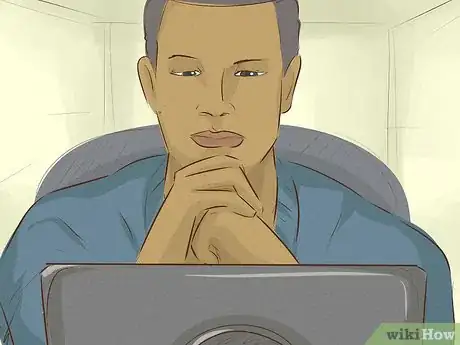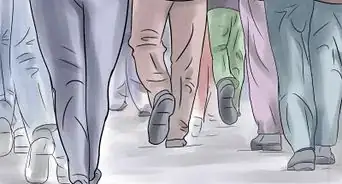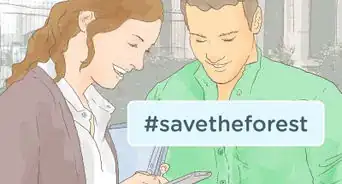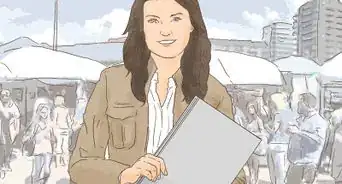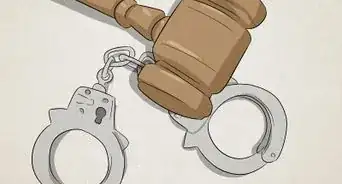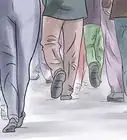This article was co-authored by Kris Jensen. Kris Jensen is the Principal of Regenerative Communities Collective, a design consultancy focusing on regenerative design, and the Founder and Executive Director of Gardensmiths, a community centered initiative focused on the connection between regenerative gardens and resilient people, Previously, he was the Executive Director of the San Bruno Mountain Watch in California. He has working in the environmental activism field for over 12 years.
This article has been viewed 43,656 times.
Community organizing can be a challenging, yet incredibly rewarding career. You will have the opportunity to positively affect your community and the people in it. If you think community organizing is for you, learn how to get started and make a difference.
Steps
Gathering Information
-
1Understand what a community organizer is. Before you commit to being a community organizer, you should understand what the job entails. You will have to identify issues in your community, think of solutions, and gather enough support to enact them. This will sometimes mean challenging the existing authority by public protesting or rallying. You shouldn't be afraid to speak to a crowd, go door to door, make cold calls, and do whatever it takes to get attention for your cause.[1] [2]
-
2Educate yourself politically. To change the government, you should understand how it works. Become familiar with the election process, how laws are passed, and who your local politicians are. Familiarize yourself with local and national laws. This will all become important when you start campaigning for change.Advertisement
-
3Learn about political or social issues in your community. These can range from simple, like needing a stop sign on a corner, to serious, like an unjust law. Whatever the case, you should learn all you can about the issue before taking action. There are a few ways you can do this.
- Watch the local news. These networks will often cover local issues and give you ideas on how to take action.
- Read local newspapers. Look especially at the editorial or opinion sections. Local citizens will often write in complaining of problems in the community.
- Talk to people. This is a crucial skill for a community organizer. Ask neighbors if they're unhappy with something in the community and listen carefully to their answers.
-
4Investigate if there are similar groups in your area. Once you've identified an issue and educated yourself on it, you should see if anyone else has already taken action. Usually an internet search will uncover groups in your area. You can also check local meeting places like libraries and government buildings for flyers.
- If you find a group taking the same actions as you, you may want to join it instead of starting your own. However, if you think this group has different goals or methods than you, you can go ahead and start your own. You may still wish to approach this already established group and present your ideas and see if they will support you.
-
5Try volunteering first. If you're still unsure if community organizing is for you, try volunteering with a similar group. This will show you what the job is like. By volunteering you can also make important contacts that will become important when you form your own group.
Forming a Group
-
1Organize a small meeting. Through investigating an issue, you've probably come across a few people who share your thoughts. These can be friends, family, or people you know from school or the community. Say you'd like to meet and discuss a problem you've noticed in the community. Even if it's only a few people, this initial meeting is very important to develop a plan for your group.
-
2Discuss the issue. Now that you've identified an issue and investigated it, you have to figure out how you'll remedy it. With this first meeting, you should brainstorm with your group about what action you will take.
- Talk about the issue that brought everyone there. Ask specifically what concerns them and why they feel this is an important issue.
- When you're all clear on what the issue is, brainstorm what you hope to do to fix it. Figuring out clear goals for this group will help you develop a plan of action. For example, if your goal is to elect a new member to your local legislature, most of your work will revolve around raising awareness and support for that candidate.
- Let everyone propose solutions. It is important that you allow everyone a chance to speak. Community organizing is based on group participation. Even though you are the group's founder and leader, you are responsible for listening to all your members equally.
- Discuss the methods you are willing to use in achieving your goals. Are you only planning on writing letters and talking to the media, or will you use direct action like protests? See if everyone in the group is on board with the methods you plan on using. Some won't be comfortable marching in rallies and protesting. If not, that's okay- there's still plenty of behind the scenes work they can do to help.
-
3Name your group. Ideally your group's name will be easy enough to say and remember while also giving a clue of what the group's goals are.
- If you plan on using an acronym, research if there are other prominent groups using that acronym. If so, consider changing your name. You run the risk of all your potential members being unable to find your group when searching the internet.
-
4Agree on a mission statement. At the first meeting, work out a plan of action with your attendees. The mission statement is crucial for defining what your group is all about. Keep the following in mind while writing your mission statement:
- Start with the group name. This will ensure all readers know whose mission statement this is.
- State the group's purpose. What problem do you hope to fix or what service do you hope to provide?
- State your goals. What is the group's overall plan, and what methods do you intend to use?
- Make your statement specific enough to display the group's intentions, but broad enough so that you don't have to keep changing it. For example, if your group wants a stop sign by a school, say that your purpose is to promote neighborhood safety.
- Keep it short. A few sentences will do just fine. You want to get straight to the point so potential members will understand exactly what you're about and if they want to join.
- Once you settle on a mission statement, be sure to print it on any flyers and other media the group produces.
- As an example, look at this mission statement from a top nonprofit: Greenpeace is the leading independent campaigning organization that uses peaceful protest and creative communication to expose global environmental problems and to promote solutions that are essential to a green and peaceful future.[3]
-
5Decide how the group will be run. Is the group a democracy? Will there be an election? How will decisions be made? Will each member have a specific task? Do your best to figure all these questions out early, ideally at the first meeting. This way, the group can focus on solving the original issue without being troubled with organizational questions.
-
6Hold regular meetings. Once you've established your group, you should continue meeting regularly. Otherwise, your group may simply melt away before you even get started.[4]
Raising Awareness and Building Your Group
-
1Hang flyers. Most local libraries, government buildings, and businesses have bulletin boards where you can advertise your group and cause. Put together an eye-catching flyer that displays your group's name and the issue you represent. Also make sure you include your group's contact information and details on when and where you meet so you can attract new members.
-
2Use social media. Spreading awareness is very easy with social media. Make a page for your group and update it regularly. Have your members advertise the group on their personal pages. This method can increase your support far beyond your immediate community.
- It is very important to keep your social media pages active. If people see that your pages haven't been updated in months, they will likely assume the group is inactive.
-
3Organize door to door campaigns. Community organizing means interacting with the neighborhood, and face to face conversations are crucial for building support.[5]
- Make each one of your members responsible for a given area. Make this an area that can be covered in a day, not more than a few blocks.
- Make sure you've printed flyers or a newsletter that they can distribute. Include the group's mission statement and a brief description of your group's goals and vision.
- Your door to door people should ideally be your most enthusiastic members who are well-versed on the issues. Not everyone is comfortable knocking on doors and interacting with strangers. You want to make sure the neighbors you meet come away with a positive view of your group and cause.
-
4Advertise in the newspaper. Submit an editorial to your local paper. State the issue and that you have formed a group to fix the problem.
- Some newspapers won't let you advertise your group in an editorial. If that's the case, you can still make a good argument for your cause by laying out a plan of action.
-
5Use the media. The media is a very powerful force, so it will serve you well to use it to your advantage.
- Contact local media stations and see if they are willing to cover your group or give an interview.
- Designate a spokesperson. While all members of the group are potential media liaisons, important press interactions should be handled by specific members. Ideally they will be well-spoken, charismatic, and know the issues inside and out. This will provide the best possible public face for your group.
- If a local news station or newspaper runs a story about your group, make note of who the reporter was. They can be an important contact who is willing to give you more coverage.
-
6Set up booths at local events. Many towns have fairs and other events that attract a lot of people. Make sure these booths are stocked with flyers and staffed by charismatic members who are able to talk about the issue with strangers.
-
7Keep track of all your members. It is crucial that you have all your members in an organized file with all their contact information. Check in with members regularly to keep them involved. If you lose track of members, your group will gradually fall apart.[6]
Taking Action
-
1Contact local politicians. Now that you've built support for your cause, you have leverage to present your issue to local politicians. State your problem clearly and how you expect it to be solved. If they can't help you, have them give you the information of someone else who can.
-
2Organize letter-writing campaigns. Have all your members contact the politician you need to work with. This flood of correspondence should help get their attention.
- If politicians remain unresponsive, use letter-writing campaigns to contact the media instead. If there is a lot of buzz about a particular issue, the media is more likely to cover it.
-
3Organize a rally. When your group has grown large enough, a public rally will demonstrate the support behind your cause.
- Before scheduling, make sure all or most of your members can come. You don't want to publicize a rally and have a small crowd. This event is supposed to demonstrate your support.
- Advertise the rally. After you know all your members will come, reach out to the community. Invite anyone interested in your cause to come show their support.
- Make up posters, banners, T-shirts- anything to get attention for your group. This will both get your message across and show group solidarity.
- Most areas require a permit for a rally. Make sure this is all taken care of before your event to avoid any trouble with law enforcement.
- Contact the local media and see if they will cover the event. If a particular reporter or station has covered your group before, contact them first.
- Have your spokespeople ready to talk to any spectators. This can be a great opportunity to get new members.
- Keep everything peaceful. You want this rally to demonstrate that your group is a positive force in the community. A rowdy-looking group will probably not gain you any support from locals.
-
4Distribute a petition. Have all your members go around and collect signatures. When you've gathered enough support, present this petition to your local government.
-
5Cooperate with other community groups. There are probably other organizations that can add to your base of support. Meet with their leaders and see if they will support your cause. Organize joint rallies and events to increase your support.
-
6Support candidates who speak for your cause. If the current government won't support your cause, it will probably become necessary to vote in a new one. If you cannot find a candidate who supports you, consider running yourself or nominating someone from your group.
-
7Analyze your failures. It is very likely you will experience setbacks in community organizing. The important part is not getting discouraged, but learning from these setbacks. When you understand where you went wrong, you can fix the problem and succeed the next time.
Community Q&A
-
QuestionIf you have people in the communities who do not want the same progress as the rest of the group, what do you do about them?
 LibArtsPremed18Top AnswererAs a community organizer or macro level social worker, you should first try to determine the goals, needs, and desires of the entire community. If there is strong pushback on a goal you are trying to attain, perhaps it may be time to step back and reevaluate your goals compared to community goals and see where you can compromise. Any goal that doesn't have widespread community support will be difficult to advocate for and may be detrimental to some community members.
LibArtsPremed18Top AnswererAs a community organizer or macro level social worker, you should first try to determine the goals, needs, and desires of the entire community. If there is strong pushback on a goal you are trying to attain, perhaps it may be time to step back and reevaluate your goals compared to community goals and see where you can compromise. Any goal that doesn't have widespread community support will be difficult to advocate for and may be detrimental to some community members. -
QuestionDo you need any licenses or legal forms to start a community organisation?
 Benjamin M.Top AnswererIn many places, no! If you live in a common law country (e.g. Canada, UK, Australia, New Zealand), then as soon as you get together with one or more other people and pursue a goal other than profit, you may legally be considered an "unincorporated association". You are not required to become legally incorporated or get a license or anything like that in many places unless you start engaging in regulated activities, e.g. fundraising, commercial activities, grant applications, healthcare, etc.
Benjamin M.Top AnswererIn many places, no! If you live in a common law country (e.g. Canada, UK, Australia, New Zealand), then as soon as you get together with one or more other people and pursue a goal other than profit, you may legally be considered an "unincorporated association". You are not required to become legally incorporated or get a license or anything like that in many places unless you start engaging in regulated activities, e.g. fundraising, commercial activities, grant applications, healthcare, etc. -
QuestionHow to answer as a leader of a community organisation in an interview?
 Benjamin M.Top AnswererObviously a lot depends on the situation, but as the leader of a community organisation, you always want to be truthful, clear, and stay on the message of your organisation. Journalists aren't out to get you most of the time, but if you give them a reason to doubt or question your answer, it is their job to do so.
Benjamin M.Top AnswererObviously a lot depends on the situation, but as the leader of a community organisation, you always want to be truthful, clear, and stay on the message of your organisation. Journalists aren't out to get you most of the time, but if you give them a reason to doubt or question your answer, it is their job to do so.
Warnings
- You may come in contact with law enforcement, especially while rallying or protesting. It is best to cooperate and abide by local laws.⧼thumbs_response⧽
- This job will likely involve confrontation. While you should always avoid violence, you should be prepared to stand firm when facing opposition.⧼thumbs_response⧽
References
- ↑ http://archive.advocate.nyc.gov/organizing-toolkit
- ↑ http://www.worc.org/userfiles/file/Howto-Understand-Role-of-Community-Organizer.pdf
- ↑ http://www.greenpeace.org/usa/en/about/
- ↑ http://comm-org.wisc.edu/papers97/beckwith.htm#actionstrat
- ↑ http://comm-org.wisc.edu/papers97/beckwith.htm#actionstrat
- ↑ http://comm-org.wisc.edu/papers97/beckwith.htm#actionstrat
- ↑ http://comm-org.wisc.edu/papers97/beckwith.htm#actionstrat


